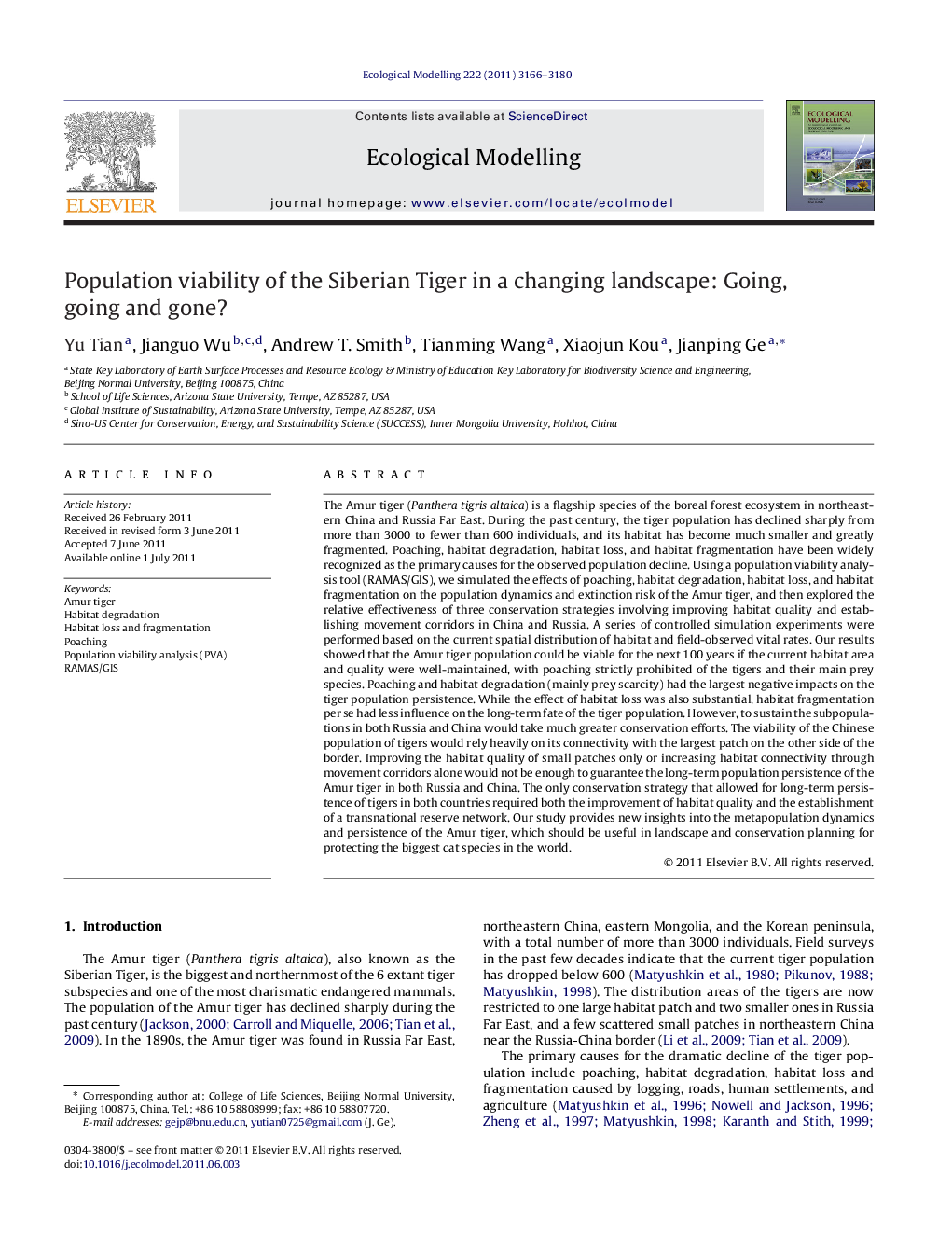| کد مقاله | کد نشریه | سال انتشار | مقاله انگلیسی | نسخه تمام متن |
|---|---|---|---|---|
| 4376676 | 1303388 | 2011 | 15 صفحه PDF | دانلود رایگان |

The Amur tiger (Panthera tigris altaica) is a flagship species of the boreal forest ecosystem in northeastern China and Russia Far East. During the past century, the tiger population has declined sharply from more than 3000 to fewer than 600 individuals, and its habitat has become much smaller and greatly fragmented. Poaching, habitat degradation, habitat loss, and habitat fragmentation have been widely recognized as the primary causes for the observed population decline. Using a population viability analysis tool (RAMAS/GIS), we simulated the effects of poaching, habitat degradation, habitat loss, and habitat fragmentation on the population dynamics and extinction risk of the Amur tiger, and then explored the relative effectiveness of three conservation strategies involving improving habitat quality and establishing movement corridors in China and Russia. A series of controlled simulation experiments were performed based on the current spatial distribution of habitat and field-observed vital rates. Our results showed that the Amur tiger population could be viable for the next 100 years if the current habitat area and quality were well-maintained, with poaching strictly prohibited of the tigers and their main prey species. Poaching and habitat degradation (mainly prey scarcity) had the largest negative impacts on the tiger population persistence. While the effect of habitat loss was also substantial, habitat fragmentation per se had less influence on the long-term fate of the tiger population. However, to sustain the subpopulations in both Russia and China would take much greater conservation efforts. The viability of the Chinese population of tigers would rely heavily on its connectivity with the largest patch on the other side of the border. Improving the habitat quality of small patches only or increasing habitat connectivity through movement corridors alone would not be enough to guarantee the long-term population persistence of the Amur tiger in both Russia and China. The only conservation strategy that allowed for long-term persistence of tigers in both countries required both the improvement of habitat quality and the establishment of a transnational reserve network. Our study provides new insights into the metapopulation dynamics and persistence of the Amur tiger, which should be useful in landscape and conservation planning for protecting the biggest cat species in the world.
► Our study examines the effects of key factors and conservation measures on the population viability of the Amur tiger.
► Our results show that improving habitat quality of small patches only or increasing habitat connectivity by establishing corridors alone would not be enough to guarantee the population persistence of the Amur tiger.
► The long-term persistence of the Amur tiger requires both the improvement of habitat quality and the establishment of transnational corridors.
Journal: Ecological Modelling - Volume 222, Issue 17, 10 September 2011, Pages 3166–3180